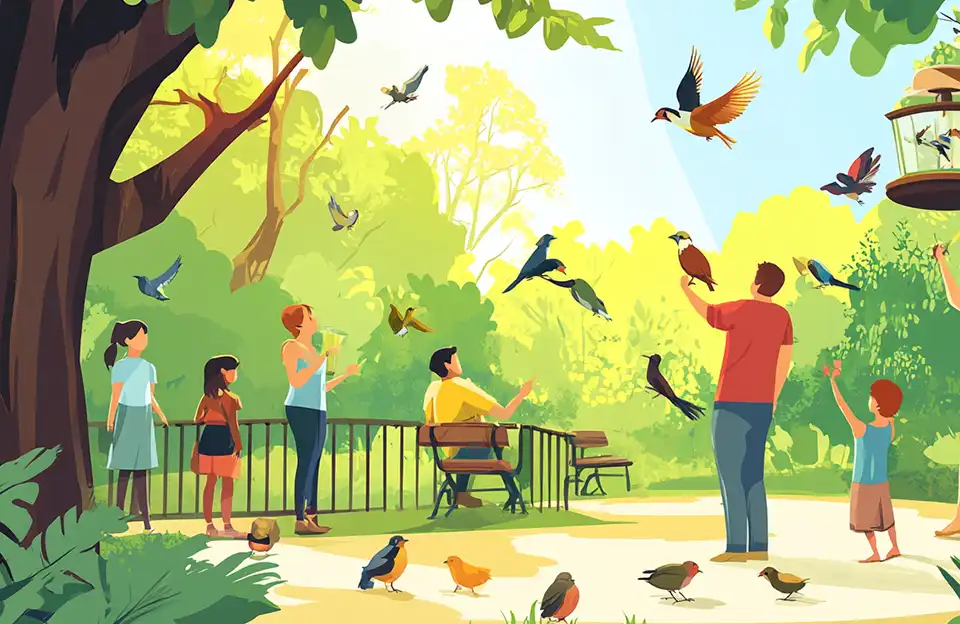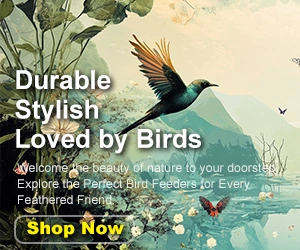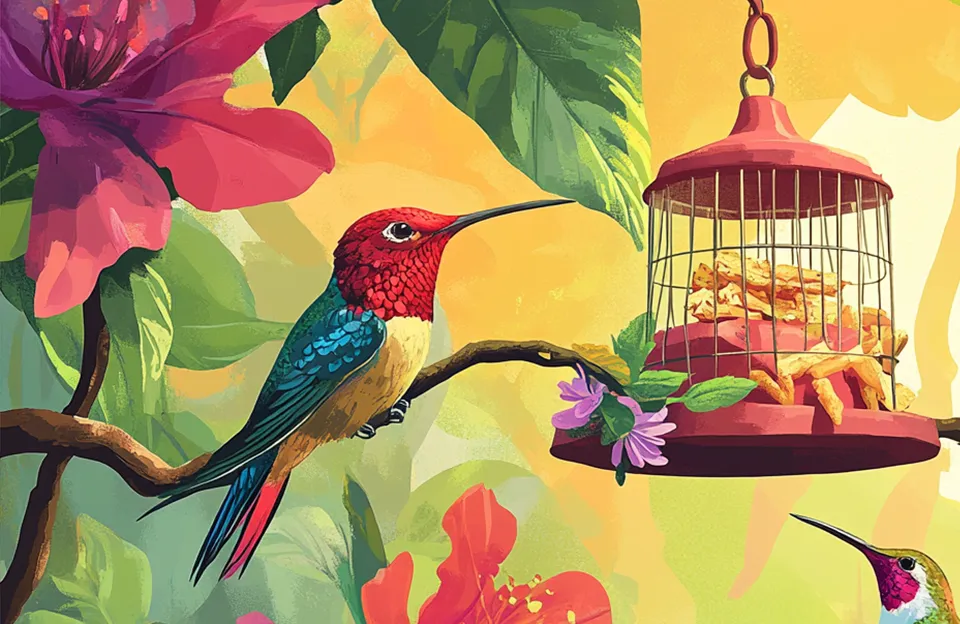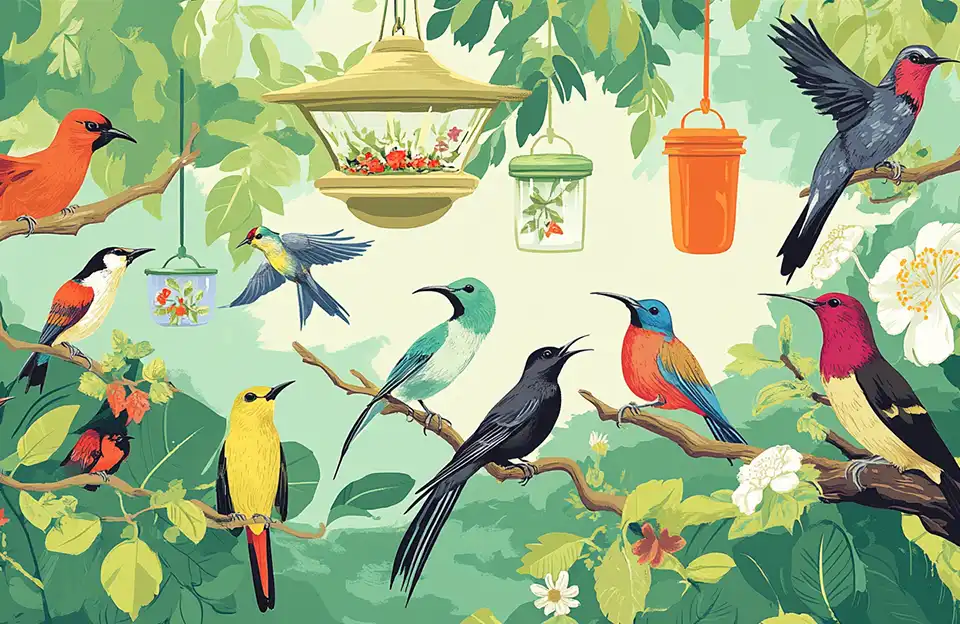Feeding wild birds is not only a delightful activity but also an important way to support ecosystems and bird conservation. In many areas, particularly those impacted by urbanization and climate change, natural food sources for birds have diminished. Providing supplemental food helps stabilize bird populations and promotes biodiversity. Furthermore, bird feeding is a way to connect with nature, offering opportunities to observe bird behavior and learn more about avian life. These interactions provide immense educational value to both children and adults, fostering a deeper appreciation and responsibility for the natural world.
While bird feeding has many benefits, irresponsible practices can negatively impact both birds and the environment. For instance, providing unhealthy or inappropriate food may cause health issues for birds or even threaten their survival. Additionally, unclean bird feeders can harbor bacteria and mold, spreading diseases that harm bird populations. Bird feeders must also avoid attracting pests or disrupting the ecological balance. Therefore, responsible bird feeding requires following scientific guidelines to ensure this well-meaning activity truly benefits birds and the natural environment.
1. Choosing the Right Bird Food
Selecting the right food for different bird species is a cornerstone of responsible feeding. For example, hummingbirds require high-energy nectar, typically a mixture of one part sugar to four parts water, which provides them with the instant energy needed for flight. Woodpeckers thrive on nuts and suet, offering ample fat and protein essential for their diet. Additionally, sparrows and goldfinches thrive on small seeds like sunflower seeds or thistle seeds. Understanding the dietary preferences of local bird species enables you to offer the most appropriate nutrition.
Certain foods are harmful to birds and must be strictly avoided. For instance, moldy seeds or nuts may harbor toxins that pose serious health risks. Similarly, bread, crackers, and other processed foods are not suitable for bird digestion as they lack essential nutrients and can cause digestive issues. Responsible feeders should always opt for fresh, uncontaminated food to ensure safe feeding.
Seasonal changes impact the nutritional needs of birds. In cold winters, birds benefit from high-calorie foods like peanuts, suet, and safflower seeds to maintain body heat. In summer, they need more hydration to prevent dehydration, making water-rich fruits like oranges or grapes excellent choices. In migration seasons, a larger food supply ensures birds have sufficient energy for their long journeys.
2. Choosing and Maintaining Bird Feeders
Different types of bird feeders are designed to suit various birds and environmental needs. Hanging feeders are the most common type, easy to install, and suitable for a wide variety of foods such as seeds and nectar, making them ideal for sparrows and hummingbirds. Pole-mounted feeders, often installed on sturdy poles, are designed to resist squirrel interference and are suitable for feeding larger birds. Window feeders, on the other hand, are perfect for those who enjoy close-up birdwatching, as they attach to windows via suction cups, allowing birds to feed close to the observer while making refilling convenient. Choosing the appropriate bird feeder enhances its usability and attracts more bird species.
Maintaining feeder cleanliness is essential for bird health. Unclean feeders can harbor bacteria and mold, spreading diseases among birds. Feeders should be cleaned every two weeks, particularly in damp weather or seasons prone to mold growth. Use warm water and eco-friendly detergents, ensuring thorough rinsing and complete drying before refilling with food. Additionally, regularly inspect feeders for structural integrity to avoid sharp edges that could harm birds. A clean and safe feeder is the foundation of successful bird feeding.
Pests and predators can interfere with bird feeding. Squirrels are a common issue, as they not only steal food but also damage feeders. Squirrel-proof designs, like weight-activated mechanisms, effectively deter squirrels from accessing the food. For households in areas with active cats, placing feeders at higher locations and away from jumping paths is advisable. Additionally, consider adding baffles or choosing feeders with metal cages to protect birds from predators. These strategies create a safe, disease-free feeding environment for birds..
3. Best Practices for Feeding Birds
The frequency of bird feeding should be balanced based on natural conditions and the needs of birds. Properly maintained bird feeders are essential tools for supporting local bird populations year-round, providing a reliable source of food during critical times like winter or migration seasons. Although supplemental feeding aids bird survival, excessive reliance on it may impair their natural foraging abilities. It is recommended to adjust feeding frequency according to the season. For instance, increase feeding during food-scarce winters and reduce it in spring and summer to encourage natural foraging. Additionally, regularly monitor the use of feeders to avoid food waste or contamination from overfeeding.
Seasonal and geographical factors significantly influence the needs of birds. Bird feeders, particularly those stocked with high-calorie foods like peanuts or suet, play a critical role during migration when birds expend considerable energy and require reliable food sources to replenish their reserves. In colder winter regions, birds may rely more heavily on human-supplied food, while reducing supplemental feeding during resource-rich spring and summer encourages natural foraging behavior. Understanding local bird species and their habits enables more effective and targeted feeding. Bird feeders, when carefully chosen and properly placed, serve as vital tools to meet these needs, fostering a harmonious balance between human activity and nature.
Planting native flora, complemented by strategically positioned bird feeders, provides a sustainable and long-term approach to bird feeding. These plants often provide abundant food sources, such as seeds, berries, and nectar, while also offering shelter and nesting opportunities. For example, planting native flowering plants and shrubs can attract hummingbirds and fruit-eating species, while local tree varieties may draw woodpeckers that feed on insects. Creating a bird-friendly environment reduces dependence on supplemental feeders and supports local ecosystems.
4. Education and Community Engagement
Bird feeding is not only a way to interact with nature but also an excellent opportunity to educate future generations about caring for the environment. Observing bird behaviors, identifying species, and learning about their ecological roles can deepen both children’s and adults’ understanding of ecosystems. It also fosters environmental awareness and inspires enthusiasm for nature conservation. For children, bird feeding is particularly educational, offering an engaging and fun way to explore science and environmental stewardship.
Community bird-feeding initiatives foster connections and collaboration among residents. These activities can include organizing collective bird-feeding days, sharing experiences, and offering tips to enhance community cohesion. Neighborhood interactions not only allow people to share the joy of bird feeding but also address common challenges like pest control or bird food selection. Additionally, community bird-feeding initiatives can attract broader attention to bird conservation and contribute to local ecosystems.
Feeding birds provides a unique opportunity to observe avian behaviors and gain valuable insights. Documenting changes in local bird populations helps individuals and communities gain a deeper understanding of their natural surroundings. Learning about birds’ migration routes, breeding habits, and seasonal activities not only enhances feeding practices but also provides valuable data for local conservation efforts. For science enthusiasts, bird feeding serves as a bridge between nature and scientific exploration.
Responsible bird feeding is not only a beneficial act for ecosystems but also positively impacts bird survival and human well-being. Providing appropriate food and a safe environment helps birds overcome natural food shortages, especially during migration and winter months. Bird feeding offers a window into nature, deepening our understanding and appreciation of biodiversity. It connects ecological conservation, education, and personal joy, making it an activity with far-reaching benefits.
The key to wild bird conservation lies in starting small. Whether it’s choosing the right bird feeder, planting native flora, or participating in community bird-feeding activities, every simple action contributes to the survival of birds and the future of nature. Feeding birds responsibly supports their survival and fosters an eco-conscious lifestyle. This commitment inspires broader participation in ecological preservation, fostering a shared responsibility for nature.



